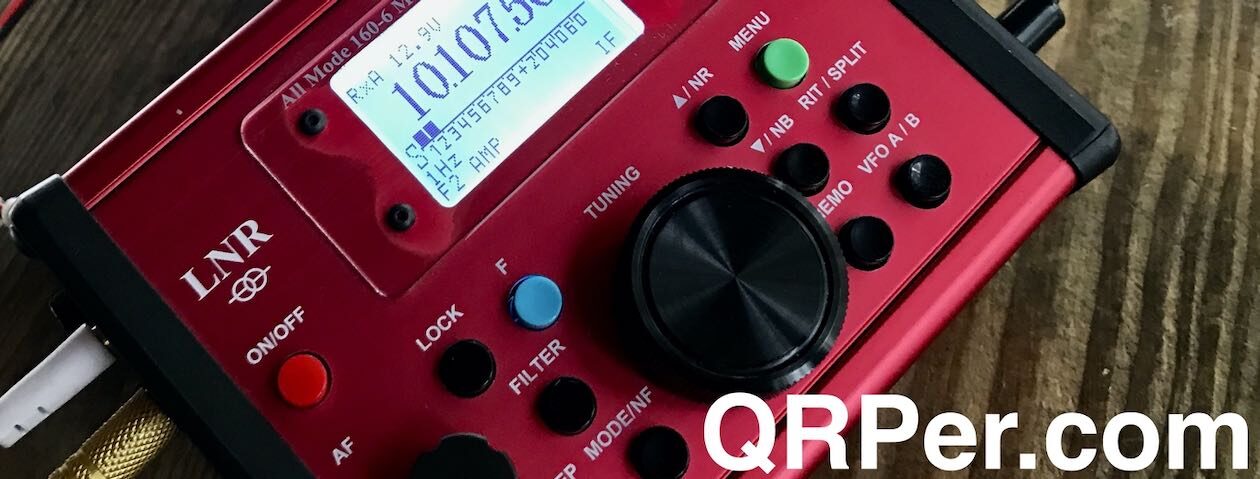On Wednesday, March 27, 2024, I had a number of errands to run in town. Before leaving the house that morning, I looked at my schedule and honestly couldn’t see a wide enough opening for an activation.
In the latter part of the morning, however, I was miraculously ahead of schedule en route to a meet-up in Asheville. I decided to take a scenic route option along the Blue Ridge Parkway (US-3378). It was misty and foggy that morning; a beautiful time to drive the BRP.
Of course, any time I’m on the grounds or within the boundaries of a national or state park, it feels odd not to activate it (do you feel that way too–?) even though I drive the BRP.
I looked at my watch and realized I had about 15-20 minutes max to perform an activation.
I only had one radio in the car: my Elecraft KH1. I didn’t have any of my camera gear which was fine, because it would have been very difficult to set up a video and complete the activation all within 15-20 minutes.
I pulled over to quickly schedule my activation on the POTA website. I then drove about 5 minutes up the BRP to a larger pull-over with a short path to the Mountains To Sea Trail (US-8313).
Instead of setting up on the MST, I just walked down the bank and stopped within a few feet of the MST. This would yield an easy POTA two-fer!
 I set up the KH1, sporting some new pressure paddles via K6ARK (one’s I’m testing), and I hit the air.
I set up the KH1, sporting some new pressure paddles via K6ARK (one’s I’m testing), and I hit the air.
Gear:
Note: All Amazon, CW Morse, ABR, Chelegance, eBay, and Radioddity links are affiliate links that support QRPer.com at no cost to you.
- Elecraft KH1 Edgewood Package which includes:
- Pelican Micro M40 (this one, modified by N5FY at Tufteln)
- K6ARK KH1 Pressure Paddles (Prototypes)
I called CQ POTA and started receiving replies slowly. Well, in truth, it wasn’t that slow, but it felt like it when I was in such a rush.
After working five stations, I checked the POTA spots page and discovered that I had not been auto-spotted. Sometimes the connection between the POTA spots page at the Reverse Beacon Network is down. Indeed, several times lately, I’ve tried to activate when it’s been down–my timing has been impeccable.
 I had a little mobile phone service, so I self-spotted and the rest of the contacts rolled in quickly.
I had a little mobile phone service, so I self-spotted and the rest of the contacts rolled in quickly.
I called QRT after logging 10 contacts with apologies to those who were still calling me. I had to get back on my schedule.
My QSO Map:

This quick activation did make me realize how the KH1 seems to be fitting into my POTA/SOTA routine.
I never intended going pedestrian mobile 100% of the time after I got my KH1. Instead, I find it to be the radio that gives me the most freedom and flexibility when I need it. The KH1 allows me to seize radio opportunities I’d otherwise miss.
In this case, setup and pack-up time was really no more than 40 seconds in total. It took me a minute to walk down the bank to the spot next to the trail to do the activation. All the rest of the time was radio time. I feel confident that had I been spotted properly, I would have validated the activation (10 contacts) in less than 15 minutes.
It’s fun to realize you can play radio anywhere (almost literally) with a handheld transceiver like the KH1. It almost feels like cheating!
Eclipse Time!
 As I write this post, I’m in our hotel’s breakfast area. We’re in Dayton, Ohio to view the total solar eclipse tomorrow. I hope to fit in a couple of activations– the only radio I’ve brought along for the ride is the KH1 (well, save my SW-3B Headrest kit).
As I write this post, I’m in our hotel’s breakfast area. We’re in Dayton, Ohio to view the total solar eclipse tomorrow. I hope to fit in a couple of activations– the only radio I’ve brought along for the ride is the KH1 (well, save my SW-3B Headrest kit).
 Traffic yesterday (en route to Ohio) was pretty heavy. I imagine it’ll be much worse today and even crazier tomorrow.
Traffic yesterday (en route to Ohio) was pretty heavy. I imagine it’ll be much worse today and even crazier tomorrow.
We took a break from traveling, yesterday, to visit my father-in-law’s alma mater. Can anyone recognize this beautiful campus? Bonus points for correctly identifying it!
Our family is meeting up with Eric (WD8RIF) and his wife, so I’m sure we’ll manage to hit at least a couple of parks!
I must admit: it feels odd to be in Dayton a few weeks prior to Hamvention.
Maybe I should camp out at the Greene County Fairgrounds for the next five weeks just to be the first to grab a good deal in the flea market–!?!
[Sinister laugh slowly fades…]
72,
Thomas (K4SWL)
Thank you!
 As always, I’d like to send a special thanks to those of you who have been supporting the site and channel through Patreon, and the Coffee Fund.
As always, I’d like to send a special thanks to those of you who have been supporting the site and channel through Patreon, and the Coffee Fund.
While not a requirement, as my content will always be free, I really appreciate the support.















































































































